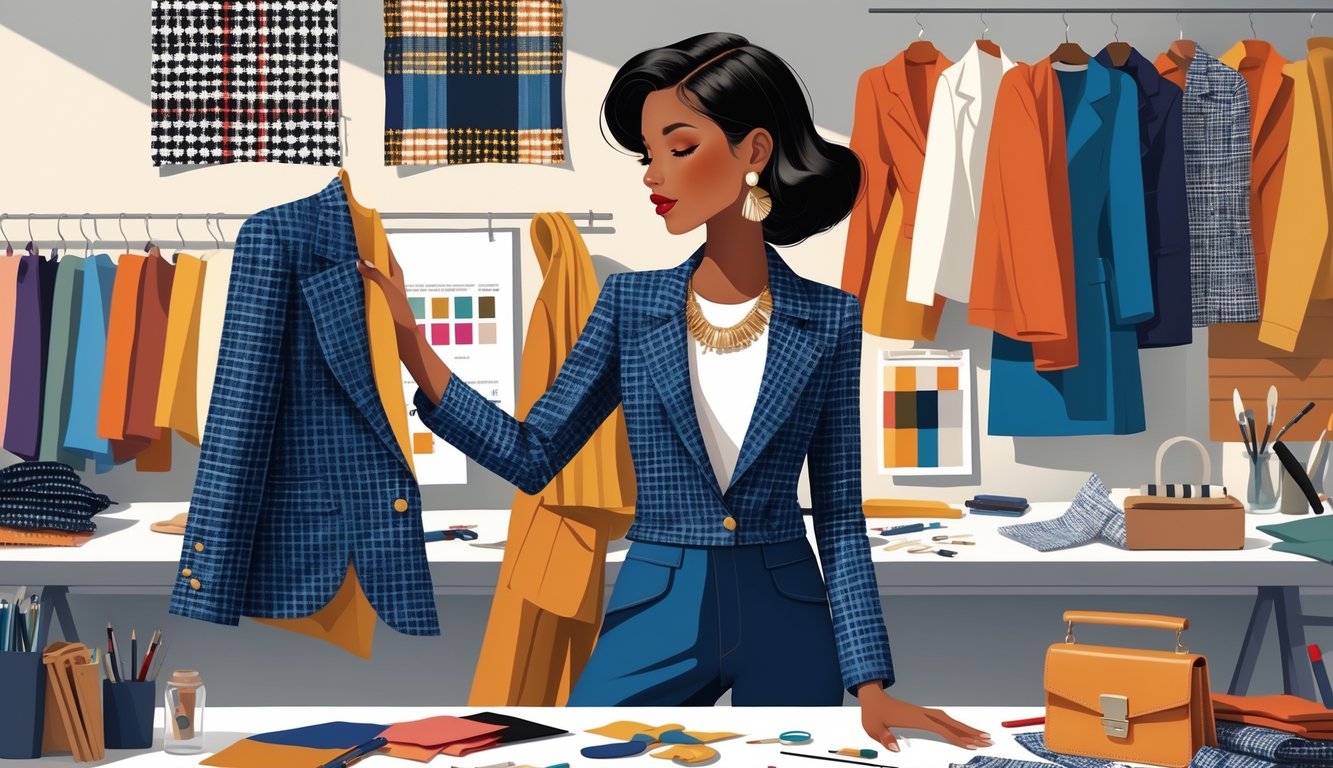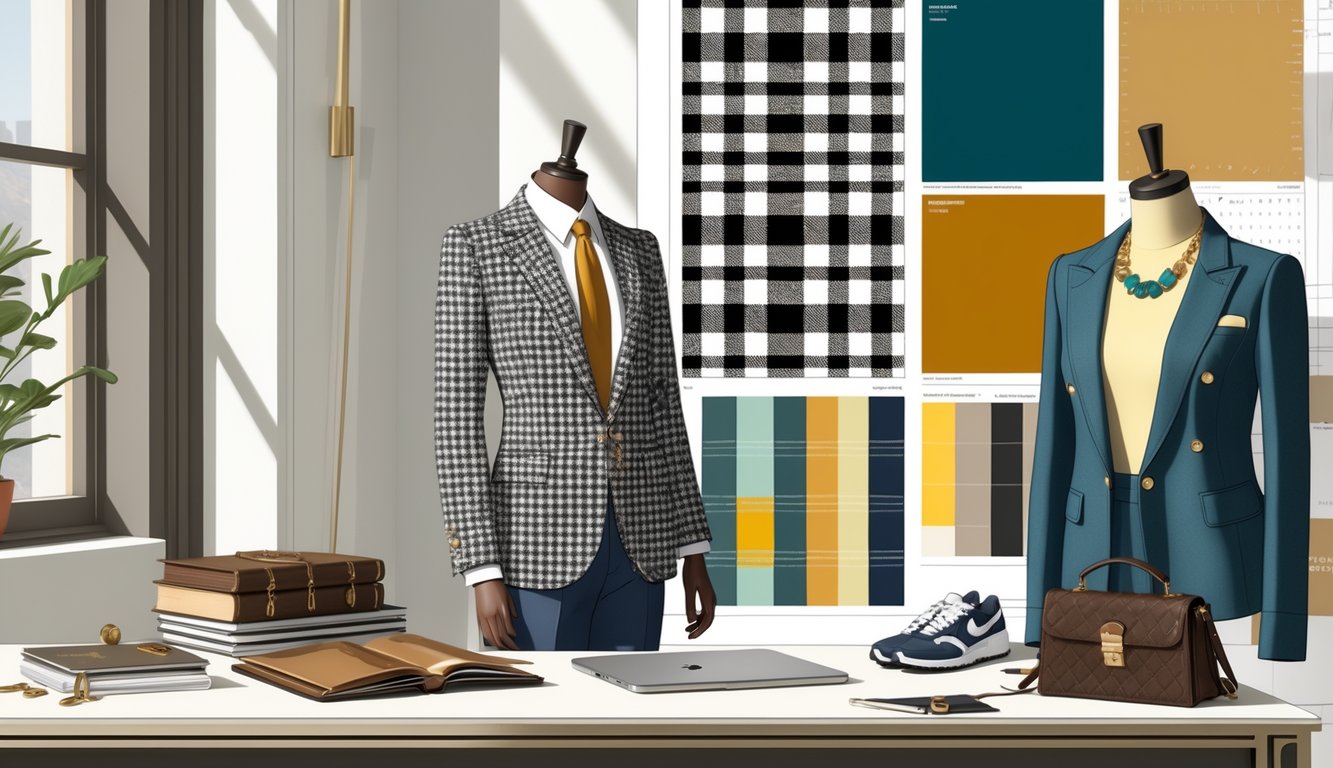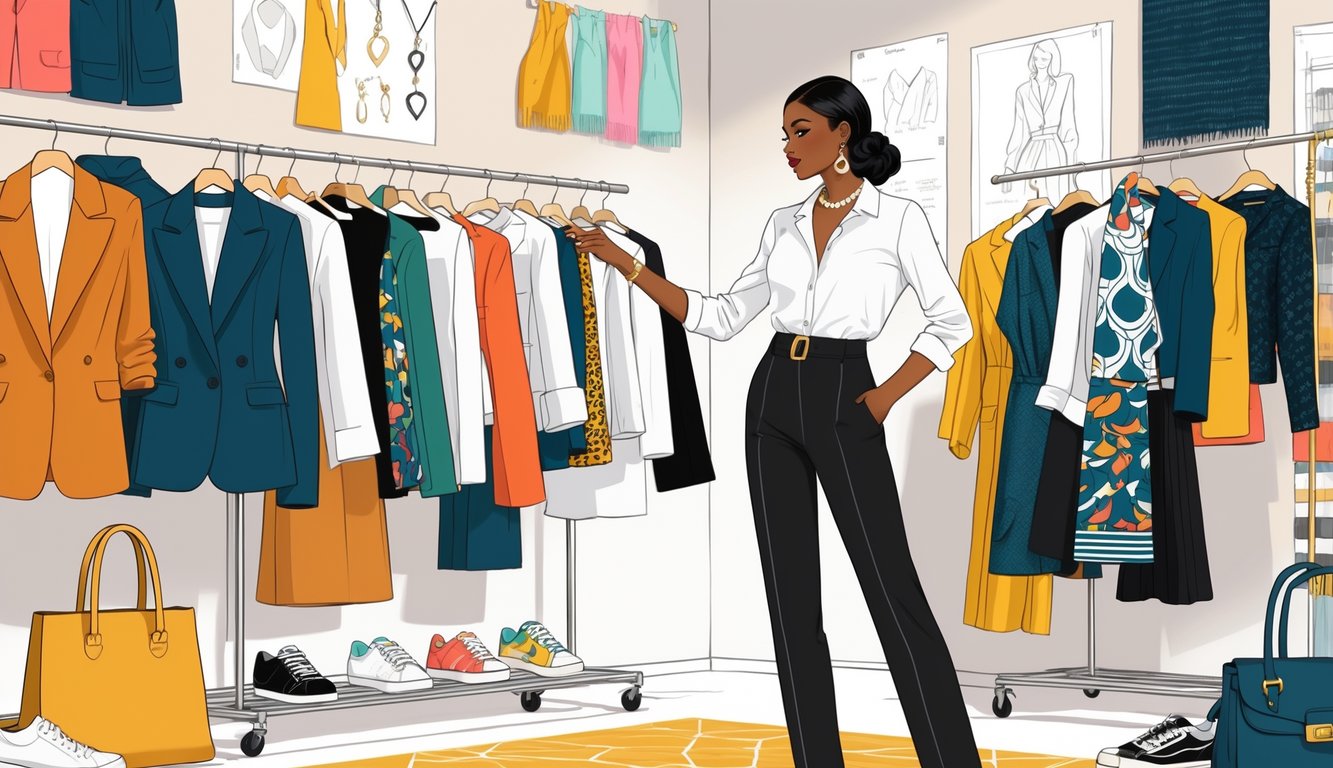
My closet’s a disaster zone—nothing matches, nothing fits, and I’m standing here, staring at a pile of clothes like they’re about to explain themselves. My friend who styles for a living (and, weirdly, wears loafers with everything, even gym shorts—don’t ask) keeps telling me people overthink mixing classics with trends. They think it’s about “making a statement.” It’s not. Pros? They swear you get a closet that actually works by leaning hard on the timeless stuff and just sprinkling in trends so they don’t scream “last season.” It’s supposedly this 80/20 thing—80% classic, 20% whatever’s trending. I went down a rabbit hole reading design blogs about it (should’ve folded laundry, but who cares), and apparently, there’s actual research. Who funds research on trench coats, anyway?
Why does “mix and match” sound fun but end up a mess? I once threw a neon cropped jacket over my ancient camel trench and looked like I got dressed in a blackout. Fashion insiders keep hammering on about fit, fabric, and not going too wild—like, swap your boring pumps for a trendy heel and suddenly you look “styled,” whatever that means. DC Fashion Week types say keep the essentials, toss in something wild, but don’t go full disco ball. I still can’t make metallic cargos work, but maybe that’s just me. Sometimes, a weird belt or a random pop of color feels less try-hard than a total wardrobe overhaul.
So here I am, surrounded by shirts I forgot to fold and regretting that one “fun” impulse buy. Is this style or just confusion? Why does nobody ever warn you about coffee stains or weather ruining your “look”? Maybe pros just don’t sweat the rules. Maybe the only real mistake is wearing something that makes you feel like you’re at a costume party.
The Foundations of Classic Style

How am I reorganizing my closet again? “Timeless” apparently means “endless maintenance.” Classic style isn’t just “buy a blazer, done.” It’s more like: find the stuff that doesn’t fall apart, fits even when you’re bloated, and never makes you cringe in photos. Nobody tells you how much work goes into “effortless.”
Defining Classic Style Staples
White button-downs? I live in them when I have no idea what to wear. Stylists keep calling them “universal”—which sounds like PR talk, but it’s sort of true. The classics are the pieces that survive every trend apocalypse: fitted blazers, cardigans that don’t pill, tees you can layer or wear solo. Anna (she’s a designer, loves rules, hates turtlenecks) says these pieces “never fight for attention.” I’m still looking for the perfect one, and no, I don’t care what the magazines say—a white tee wins over a black turtleneck for layering, every time. Classics are reliable, plain, and a little boring—until you realize boring is why they work.
Timeless Pieces Every Wardrobe Needs
Why are some clothes “timeless” but others just…disappear? Every so-called expert I know raves about tailored wool trousers. I own two pairs, neither hemmed. Navy blazers, beige trenches—Burberry was right, annoyingly. They work with everything and don’t scream for attention. Nobody agrees on how many cardigans you need; I gave away my camel one after a coffee disaster on Zoom. It’s the basics—white shirts, cardigans, tees—that actually hold up your whole closet. Not some magical “iconic” item.
Classic Patterns and Fabrics
Okay, so why does houndstooth look timeless but also kind of risky? Plaid, pinstripes, checks—they survive every trend, but I still hesitate. I once met a textile buyer who said real classic style is about quality fabric: cotton, wool, silk. I fall for cheap stuff on sale all the time, then regret it when it itches or falls apart. Pros just grab solid weaves, natural fibers, and move on. Some patterns suddenly feel ancient and nobody knows why. Fashion math is nonsense. If you want the deep dive, here’s a modern classic style guide.
Understanding Current Fashion Trends

Microtrends are like mushrooms after rain—one day it’s UGGs, next it’s “butter yellow.” Someone always claims they predicted it. Meanwhile, buyers are glued to numbers—like, “17.2% more denim skirt searches.” Who tracks that? Blink and suddenly every mannequin’s got some weird sleeve.
What Defines a Trend in Fashion?
Logic doesn’t apply. Last month, mesh was dead. Now my DMs are full of mesh ballet flats. Trends explode from runways, TikTok, or Gen Z thrift weirdness. Pantone says “Peach Fuzz” is in, and suddenly every influencer is wearing it. Designers push these colors through sponsored posts and, like magic, we’re all debating peach sweaters.
Honestly, it’s a blur between what designers want and what goes viral. Asymmetrical cuts, baggy everything, technical fabrics—sometimes it’s just a vibe. “Trends” are often just old stuff restyled with a different hashtag. Social media metrics? Total chaos.
Evolution of Trends and Their Lifecycles
Trends burn out faster than I can click “add to cart.” Jelly sandals were hot for five minutes, then gone. Instagram “trend reports” are 200 slides of nonsense. Before, a trend stuck around—skinny jeans, remember? Now, a designer does one weird button, it’s everywhere, then we’re back to “clean lines” because Google Trends says so. Buyers literally use AI to spot the next big thing, then push it until we’re all sick of it.
I’ve spent weeks building “modern classic” looks, only for street style to flip to avant-garde layering. The cycle makes no sense. Anyone who claims it’s predictable never lived through the neon era. Stylist Jenny Myers told me most trends die in under a year unless a celeb wears them again. That checks out.